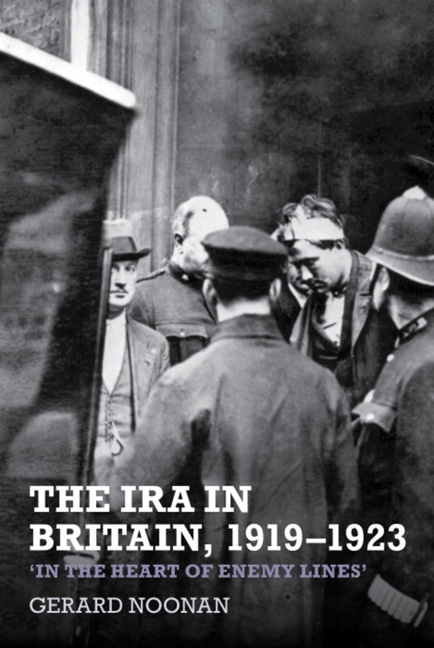Book contents
- Frontmatter
- Contents
- List of Illustrations
- List of Tables
- List of Graphs
- List of Abbreviations
- Acknowledgements
- Introduction
- Prologue
- 1 ‘On a Solid Footing’: Organizing Republicanism in Britain, January 1919–July 1921
- 2 Supplying an Army: Gunrunning in Britain, January 1919–July 1921
- 3 ‘We are doing what you are doing in Ireland’: IRA Operations in Britain, January 1919–July 1921
- 4 Truce, Treaty and Dissension, July 1921–June 1922
- 5 The Civil War, June 1922–May 1923
- 6 Combating the ‘Sinn Fein Movement’ in Britain: The Response of the Authorities, 1919–1923
- Epilogue and Conclusion
- Select Bibliography
- Index
3 - ‘We are doing what you are doing in Ireland’: IRA Operations in Britain, January 1919–July 1921
- Frontmatter
- Contents
- List of Illustrations
- List of Tables
- List of Graphs
- List of Abbreviations
- Acknowledgements
- Introduction
- Prologue
- 1 ‘On a Solid Footing’: Organizing Republicanism in Britain, January 1919–July 1921
- 2 Supplying an Army: Gunrunning in Britain, January 1919–July 1921
- 3 ‘We are doing what you are doing in Ireland’: IRA Operations in Britain, January 1919–July 1921
- 4 Truce, Treaty and Dissension, July 1921–June 1922
- 5 The Civil War, June 1922–May 1923
- 6 Combating the ‘Sinn Fein Movement’ in Britain: The Response of the Authorities, 1919–1923
- Epilogue and Conclusion
- Select Bibliography
- Index
Summary
I
Although the ambush at Soloheadbeg marked the beginning of the war, it was only the following year that the IRA 's campaign against British rule in Ireland began in earnest. In November 1920, the theatre of operations was extended to Britain itself with the mounting of attacks in Liverpool. Over the subsequent seven-and-a-half months to the truce of July 1921, warehouses, farms and railway infrastructure suffered arson attacks, telegraph and telephone networks were sabotaged and Crown forces’ relatives were terrorized. As one Volunteer declared while firing shots over the heads of staff members in a Manchester café as his comrade sprinkled the premises with paraffin: ‘We are doing what you are doing in Ireland’. This chapter examines such violence. Through the discussion of an operation in March 1921, section II provides a close insight into the mounting of attacks. Section III considers the motivation behind the violence. Sections IV and V examine the planning and execution of the operations and provide analysis thereof. Section VI focuses on the effects of the campaign and section VII concludes.
II
At a meeting of the Liverpool City IRA Company in February 1921, O/C Hugh Early announced that he had received an order to launch arson attacks on local farms in retaliation for farms being burned in Ireland by ‘Black and Tan’ RI C men. Early told his men, teamed up in small groups, to reconnoitre local farms and choose suitable targets for attack. Two Volunteers, John Pinkman and Charlie O'Gorman, discovered an ‘ideal’ objective, a farm on the outskirts of Litherland with several large barns filled with hay and straw. They chose the property because its proximity to the town's back-alleys would facilitate an easy getaway once a fire had been started. However, at the subsequent meeting of the company on 9 March, Early informed his men that the plan had changed. Instead of attacking the farms they had each chosen, the Volunteers were now ordered to set fire to specific farms in the Little Crosby area. Two targets had been selected at opposite sides of a country lane: Whitehouse Farm and Hill Farm. Dissatisfied with the plan, that evening the group of eight Volunteers reluctantly travelled to Little Crosby by train and continued to the farms on foot.
- Type
- Chapter
- Information
- The IRA in Britain, 1919–1923‘In the Heart of Enemy Lines’, pp. 135 - 185Publisher: Liverpool University PressPrint publication year: 2014

